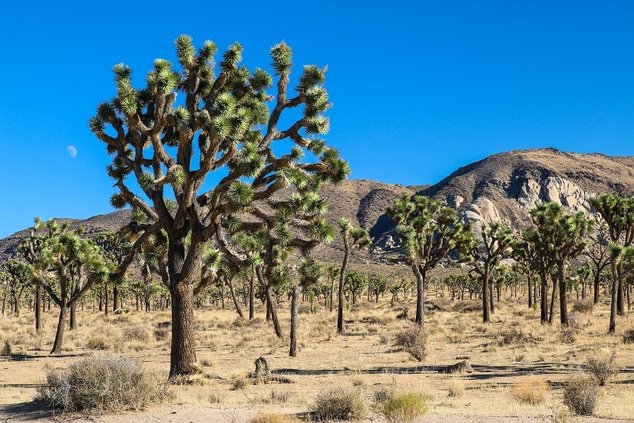Following California Governor Gavin Newsom’s enactment of the Western Joshua Tree Conservation Act, the California Natural Resources Agency (CNRA) and the California Department of Fish and Wildlife (CDFW) have begun work to create a conservation plan for the iconic tree which will further enable the state’s clean energy transition away from fossil fuels and support California’s actions to build more new housing.
California has some of the most ambitious climate goals in the world, including a 100 percent clean electric grid by 2045 and achieving economy-wide carbon neutrality. Meeting these targets means accelerating the development of clean energy projects, such as solar photovoltaic and energy storage systems across the state. The Western Joshua Tree Conservation Act simultaneously recognizes that building the clean energy system of the future can be accomplished in tandem with the effective protection of biodiversity and iconic species, such as the western Joshua tree.
“We are optimistic the Western Joshua Tree Conservation Act will have positive and lasting effects on the future of the species in the face of climate change,” said CDFW Director Charlton H. Bonham. “Our team is excited for this opportunity to lead the way in landscape-scale species conservation while streamlining the permitting process for responsible development and much-needed clean energy.”
The act authorizes CDFW to issue permits for the removal of dead western Joshua trees and the trimming of live western Joshua trees under certain circumstances. The Act also authorizes CDFW to issue permits for incidental take of western Joshua trees in connection with clean energy, housing and other projects if a permittee sufficiently mitigates its impacts. Permittees may pay specified fees in lieu of conducting mitigation activities. Funding from the in-lieu mitigation fees will be directed to the Western Joshua Tree Conservation Fund for the sole purposes of acquiring, conserving and managing western Joshua tree conservation lands and completing related conservation activities.
The act also authorizes CDFW to enter into agreements with local jurisdictions to provide them with the authority to permit the taking of limited numbers of western Joshua trees associated with developing certain single-family residences, multifamily residences, accessory structures and public works projects.
A major goal of the law is to recognize the role public works projects play in providing essential public services and meeting housing needs for Californians, and the role that clean energy projects play in reducing greenhouse gas emissions to avoid the worst impacts of the changing climate.
The new law also integrates meaningful collaboration with California Native American tribes through government-to-government consultation, co-management and relocation of western Joshua trees to tribal lands upon request.
Importantly, the act requires CDFW to develop and implement a western Joshua tree conservation plan in collaboration with governmental agencies, California Native American tribes and the public. No later than Dec. 31, 2024, the complete draft plan must be delivered to the Fish and Game Commission for its review and approval.
CDFW has taken the following steps to begin implementation of the new law:
Launched a western Joshua tree webpage to provide the latest information to the public, including an interactive map.
Created a new position to lead a team overseeing the western Joshua tree conservation effort.
Developed a subscriber-based newsletter so the public can stay informed on updates related to implementation of the act.
“The public will have the opportunity to contribute to the plan’s development through public comment and outreach meetings throughout California over the coming 18 months,” said CDFW Environmental Program Manager Isabel Baer. “We look forward to hearing from the public to help make this plan work for everyone.”
Visit CDFW’s western Joshua tree webpage for more information and to subscribe to receive the latest updates.





